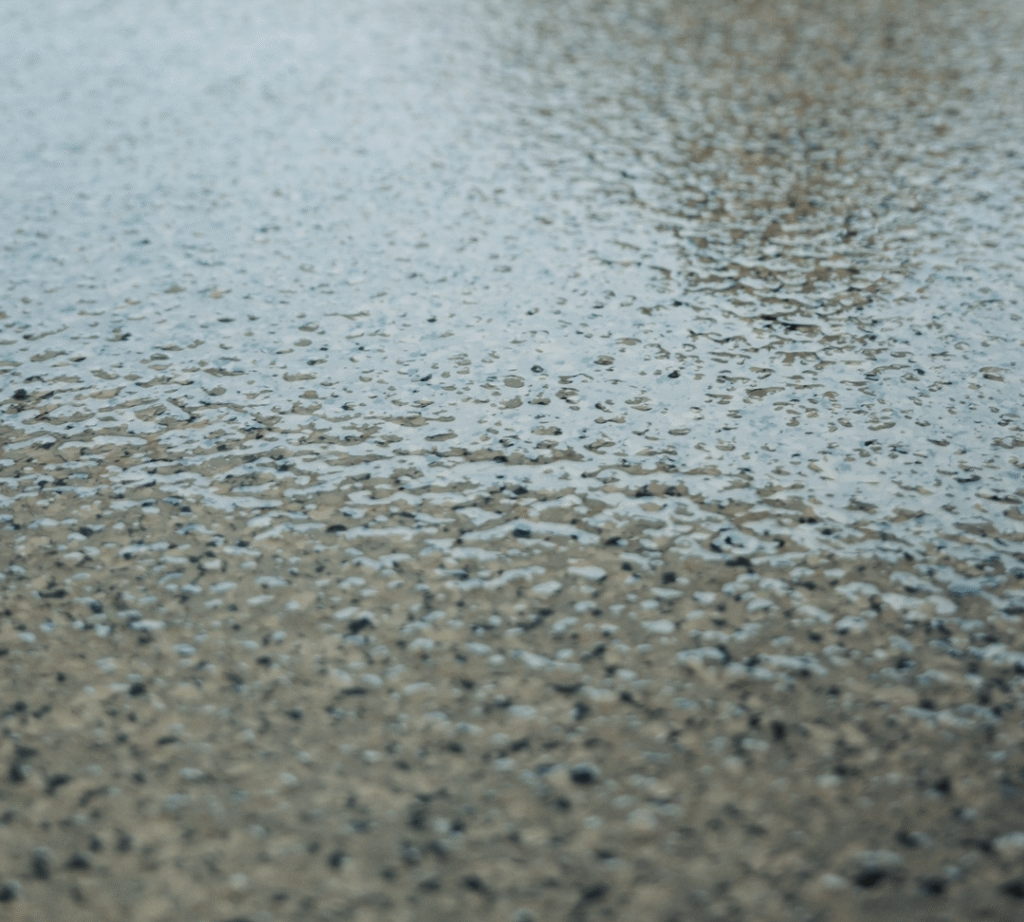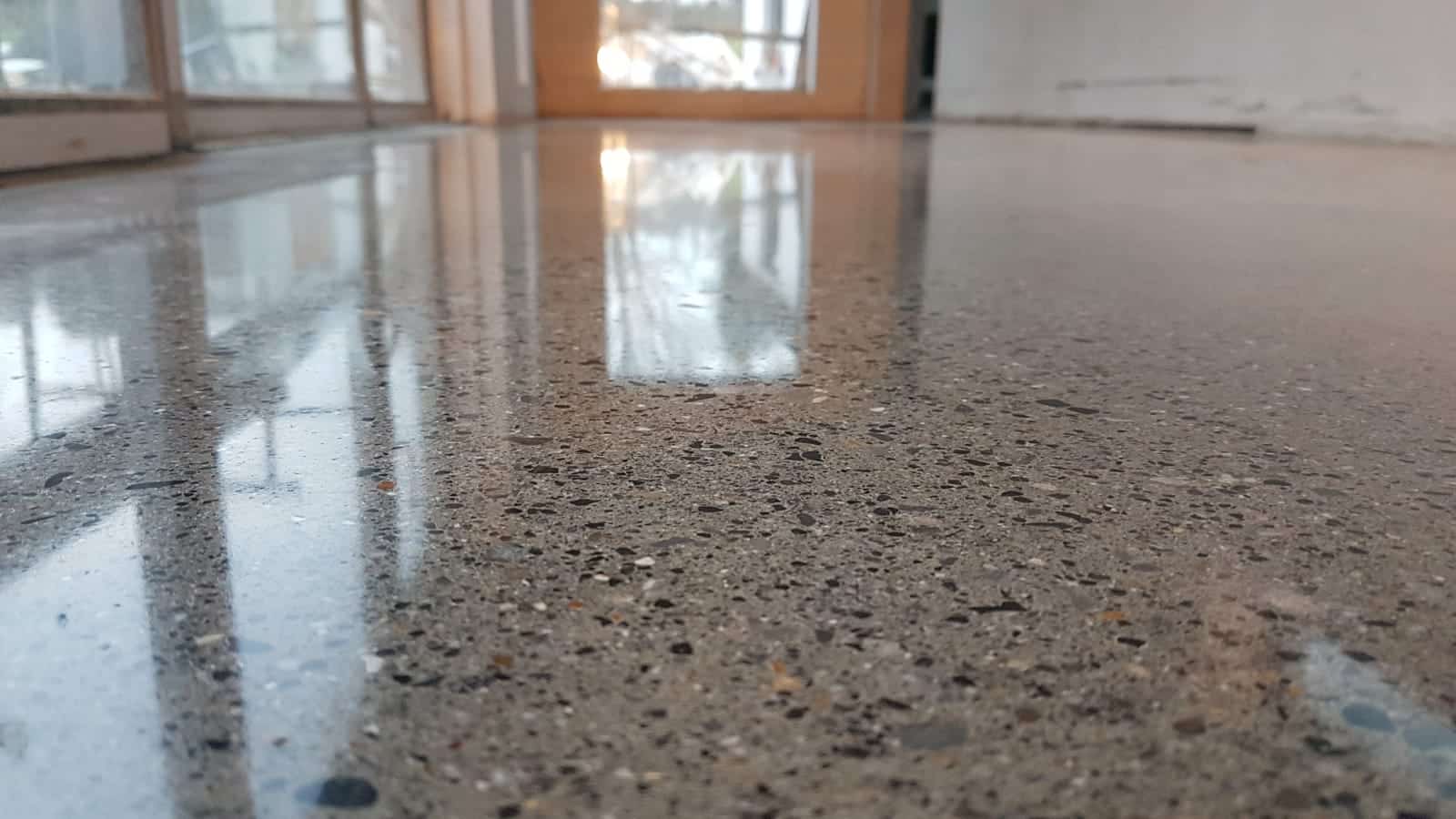In the world of concrete flooring, polished concrete and coated concrete are the two top-tier contenders when it comes to durability, aesthetics, and practicality. But which one is right for you?
Whether you’re renovating a residential garage in Kelowna or installing floors in a high-traffic commercial space, the choice between polishing and coating can affect cost, appearance, maintenance, and performance for years to come.
Let’s dive deep and help you decide.
What Is Polished Concrete?
Polished concrete is created by mechanically grinding the concrete slab with industrial diamond pads, gradually refining the surface to a glossy, reflective finish. No additional product is applied—just concrete, ground and sealed with a densifier.
Ideal for:
- Warehouses
- Modern office spaces
- Retail showrooms
- High-end homes with minimalism or industrial design
Benefits:
- Highly durable
- Dust-proof and seamless
- Low maintenance
- Elegant, high-end shine
- Eco-friendly (no coatings = fewer VOCs)
What Is Coated Concrete (Epoxy or Polyaspartic)?
Coated concrete involves applying a surface-layer resin (like epoxy, polyurea, or polyaspartic) over a properly prepped slab. It forms a chemical bond with the surface and adds colour, texture, protection, and design flexibility.
Ideal for:
- Garages
- Commercial kitchens
- Manufacturing or chemical plants
- Auto shops and aircraft hangars
Benefits:
- Custom color flakes and textures
- Chemical and abrasion resistance
- High-gloss or matte options
- Quick cure times with polyaspartics
- Seamless and waterproof barrier

Durability Showdown: Which Floor Lasts Longer?
Polished Concrete:
- Holds up well under foot traffic
- Susceptible to acid staining and tire marks
- Needs to be resealed every 3–5 years for high-traffic zones
Coated Concrete:
- Offers superior resistance to impacts, abrasions, and chemicals
- With proper installation, polyaspartic coatings can last 15–20 years
- Coatings may chip or peel if improperly prepped
Verdict: For industrial durability and chemical protection, coated concrete wins.
Aesthetics and Customization: Which Looks Better?
Polished Concrete:
- Sleek, modern, mirror-like surface
- Limited to natural gray tones (unless stained)
- Minimalist and architectural
Coated Concrete:
- Unlimited colours, flake patterns, gloss levels
- Faux marble, quartz, and metallic effects
- Custom logos or branding possible
Verdict: Coated concrete is the better choice for artistic expression and design flexibility.

Slip Resistance and Safety: Which One Wins?
Polished concrete can be slippery when wet, especially at higher gloss levels. Anti-slip additives are available but reduce the aesthetic.
Coated concrete, on the other hand, can include textured flakes or grit layers, providing better traction in wet, oily, or high-risk zones like commercial kitchens or garages.
Verdict: Coated concrete is safer underfoot, especially for functional spaces.
Cost Comparison: Which Option Saves You Money Long-Term?
When choosing between polished and coated concrete, price is often a deciding factor—but it’s not as straightforward as it might seem. That’s because pricing for both options depends heavily on the condition of your existing concrete slab and the unique characteristics of your space.
- Cracks, moisture issues, oil stains, or uneven surfaces can all increase preparation costs
- Accessibility, square footage, and even temperature or humidity levels during installation can impact pricing
Here’s a general pricing overview to give you a starting point:
| Type | Initial Cost/Sq Ft | Maintenance | Longevity |
|---|---|---|---|
| Polished Concrete | $4–$8 | Low | 10+ years |
| Epoxy Coating | $5–$10 | Moderate | 10–15 years |
| Polyaspartic Coating | $6–$12 | Very low | 15–20 years |
Important Note:
These prices are rough estimates and may fluctuate depending on the scope of surface preparation, desired finish, and material selection. At Prime Concrete Coatings, we always recommend an on-site assessment to give you an accurate quote based on your space.
Verdict: Polished concrete is budget-friendly upfront, but coated options offer better protection ROI long term—especially polyaspartic.
Maintenance Needs: How Easy Are They to Clean and Maintain?
Polished concrete requires routine sweeping and occasional buffing. Coated floors need mild soap cleaning and occasional reapplication of topcoat if subject to heavy wear.
Verdict: Both are low-maintenance, but coated concrete may need less attention over time, especially with stain resistance.
Installation Time and Disruption
Polished concrete requires multiple grinding passes, which may take longer and create dust (even with HEPA filters). Coatings, especially polyaspartic, cure faster and can be done in as little as one day.
Verdict: For speed and minimal downtime, coated concrete is faster, especially in commercial installs.
Which One Is More Resistant to Chemicals and Stains?
This is where coatings shine. Epoxy and polyaspartic coatings are engineered to resist harsh chemicals, acids, oils, and grease. Polished concrete can stain if not sealed correctly or if exposed to reactive substances.
Verdict: Coated concrete wins hands-down in chemical-heavy environments.
Climate Considerations: How They Hold Up in Cold or Wet Areas
In colder climates like Kelowna and the Okanagan, floors are exposed to freeze-thaw cycles, rock salt, and melting snow.
- Polished concrete may absorb moisture if not properly sealed.
- Coated concrete offers a non-porous barrier, keeping water and salt out of the concrete matrix.
Verdict: Coated floors are better for Canadian winters and moisture-prone areas.
Can You Combine Polishing and Coating?
Yes! Some floors are polished and then sealed with a thin, clear epoxy or polyaspartic topcoat. This combines the elegance of polished concrete with the protection of coatings—a hybrid solution for high-end retail or showroom floors.
Residential vs. Commercial Use Cases
| Setting | Best Option |
|---|---|
| Garage | Polyaspartic coating |
| Warehouse | Polished concrete or epoxy |
| Commercial kitchen | Epoxy or textured polyaspartic |
| Office/showroom | Polished concrete or hybrid |
| Retail space | Coated for branding/custom look |
Which Option Adds More Property Value?
Buyers often look for low-maintenance, high-performance flooring. In garages, basements, and shops, a coated concrete floor gives you a competitive edge. For modern interior spaces, a well-finished polished concrete floor adds aesthetic and functional value.
Verdict: Both add value—coated concrete adds performance, polished adds elegance.
Environmental Impact and VOCs
Polished concrete is more eco-friendly—no chemical coatings, no off-gassing. Epoxy coatings may release VOCs, although modern formulas are typically low-VOC or VOC-free. Learn more about green flooring practices from ConcreteNetwork.com.
Verdict: Polished concrete is greener, but coated concrete can still meet LEED standards with careful product selection.
What Floor Experts at Prime Concrete Coatings Recommend
We help our clients decide based on function, budget, design goals, and environment. In Kelowna’s climate, for garages and commercial properties, we often recommend polyaspartic coatings for their superior protection, fast installation, and custom looks.
However, for modern interiors, nothing beats the refined beauty of a well-polished slab!
Conclusion
So, is polished concrete better than coated concrete?
Not better—just different. It depends on your space, your goals, and your style. For high-impact resistance, coated concrete is the clear winner. For sleek minimalism and lower environmental impact, polished concrete is a solid choice.
Still not sure? Our team here at Prime Concrete Coatings can help. Reach out today for a custom quote or in-person consultation in Kelowna and the Okanagan region.
FAQs Polished Concrete & Concrete Coatings
Is polished concrete slippery?
It can be, especially when wet or high-gloss. Slip-resistant treatments are available.
Can I polish an old concrete floor?
Yes, but only if the slab is in good condition and has no deep damage or coatings.
How long does a coating last?
Epoxy lasts 10–15 years; polyaspartic can last up to 20+ with proper care.
Can I apply epoxy over polished concrete?
Generally, no. Polished concrete needs to be roughed up to ensure bonding.
Does polished concrete need to be resealed?
Yes, every 2–5 years depending on traffic and exposure.
Can I use coatings outdoors?
Only certain polyurea/polyaspartic products are UV stable—check specs carefully.




